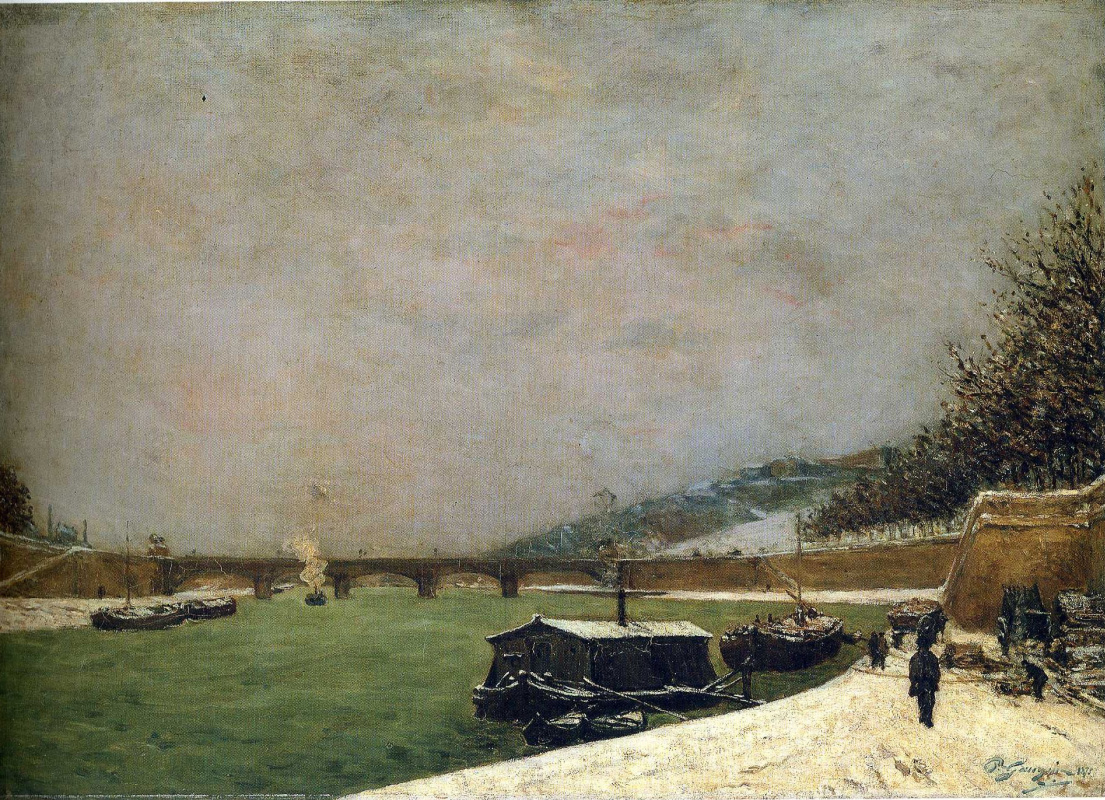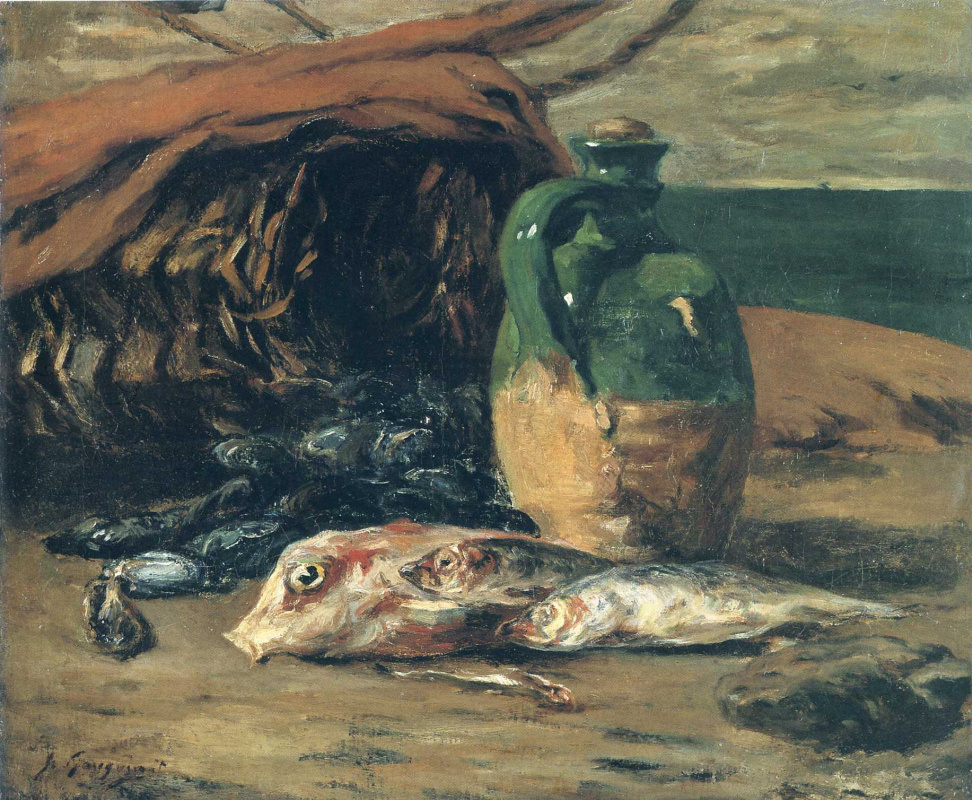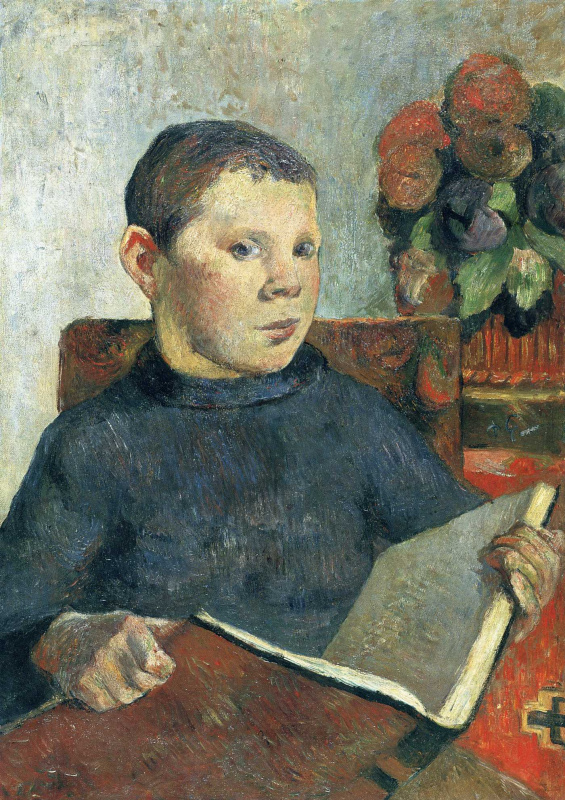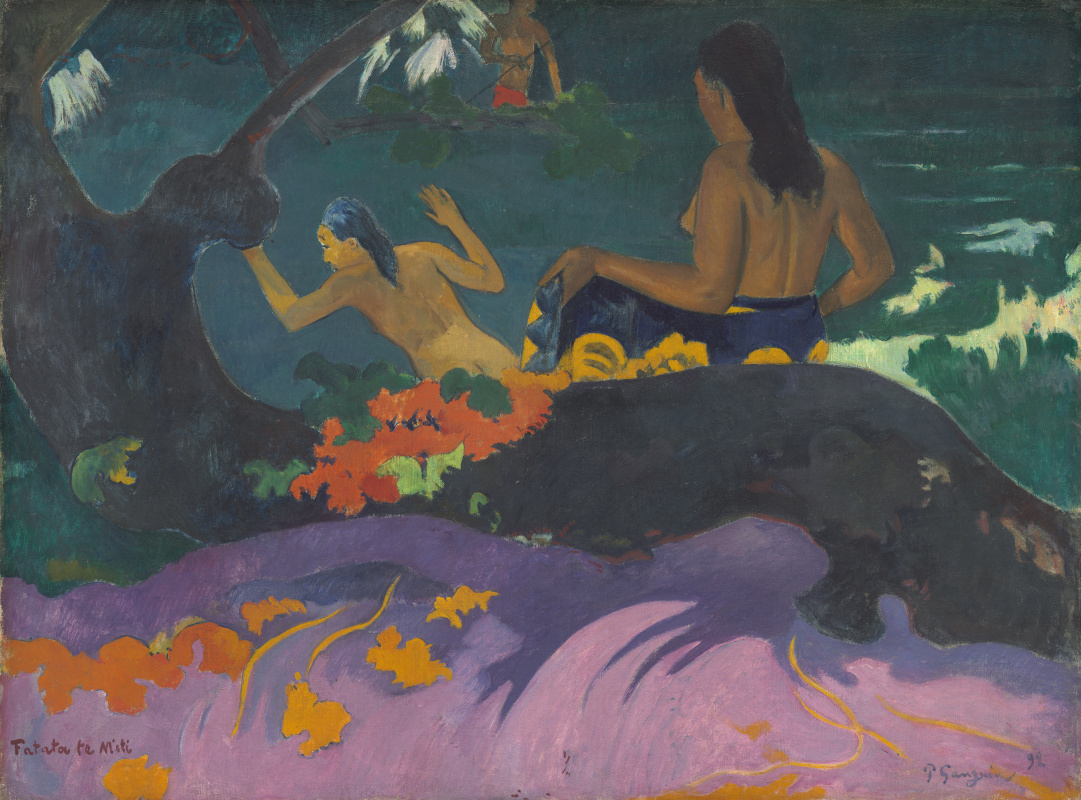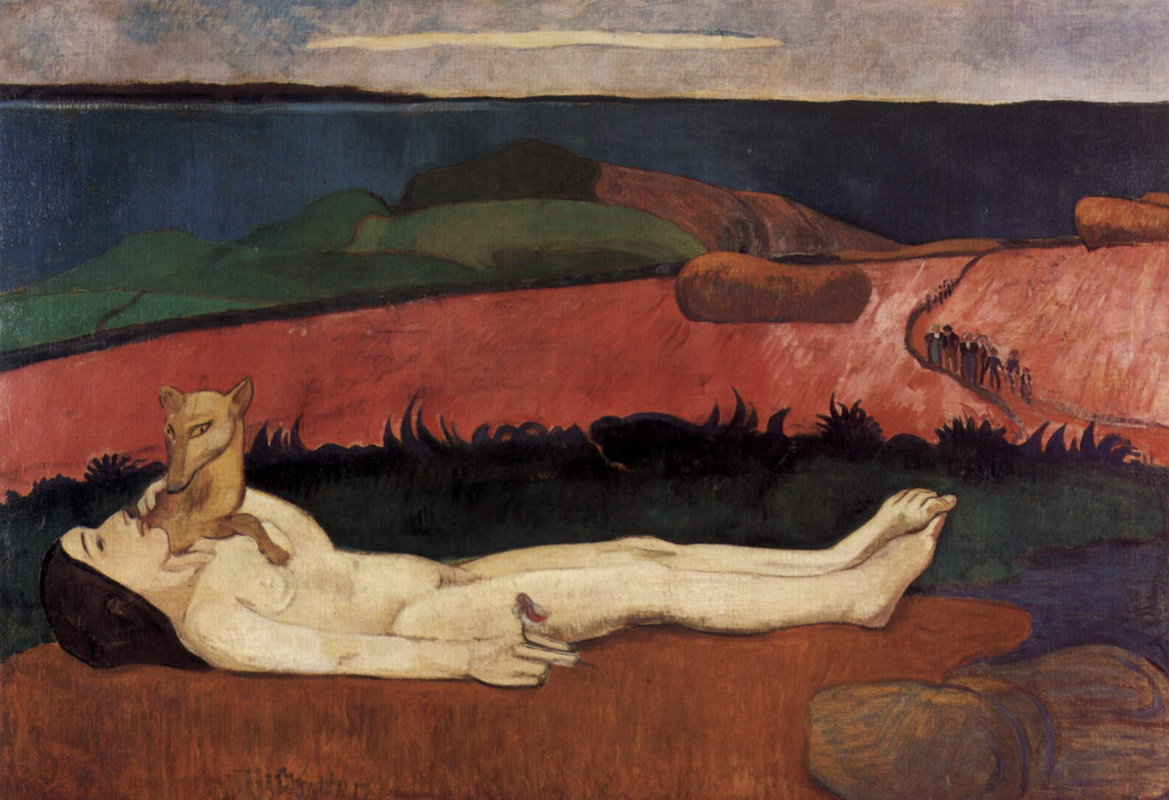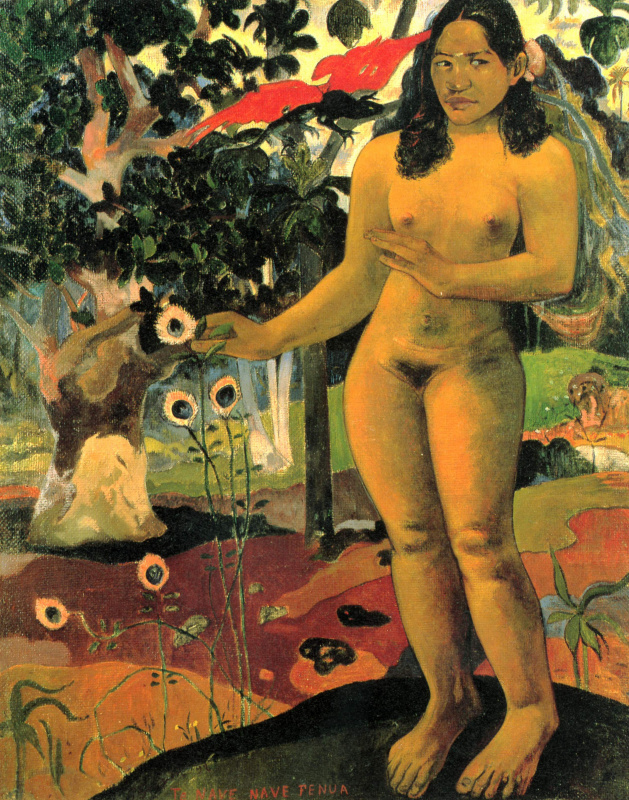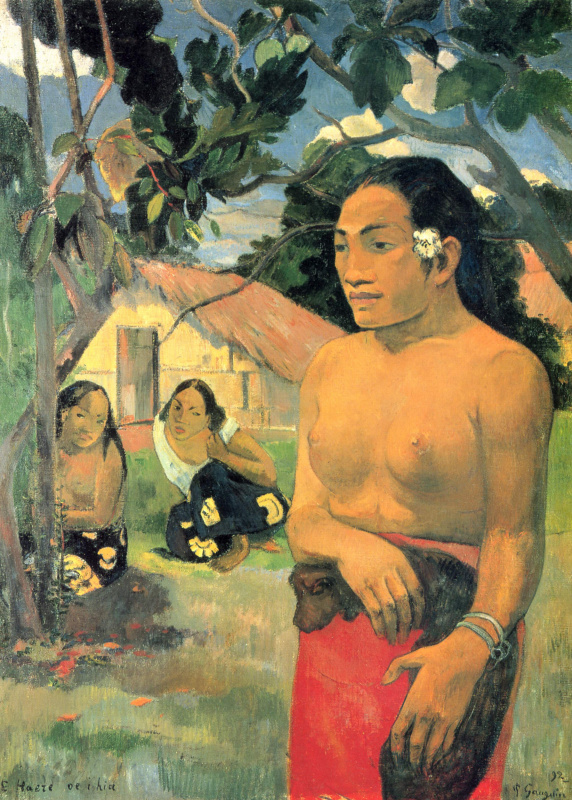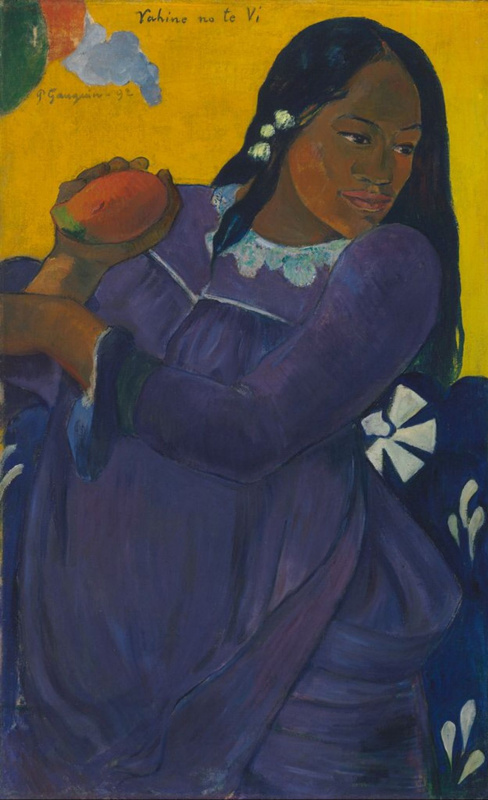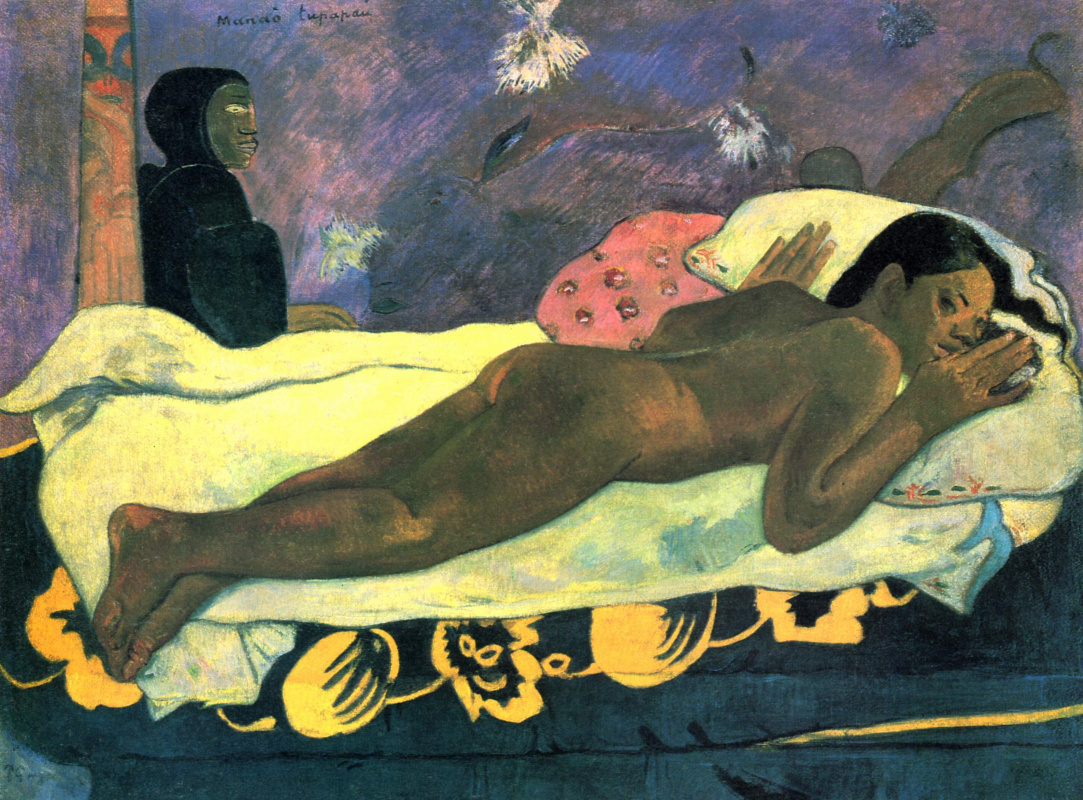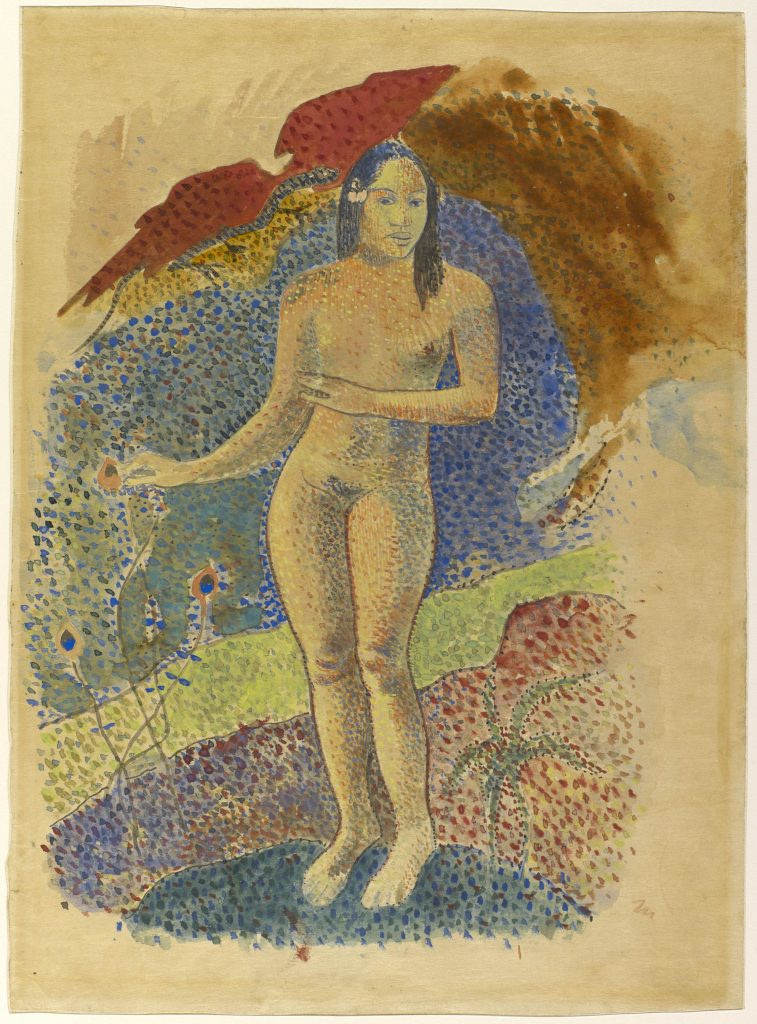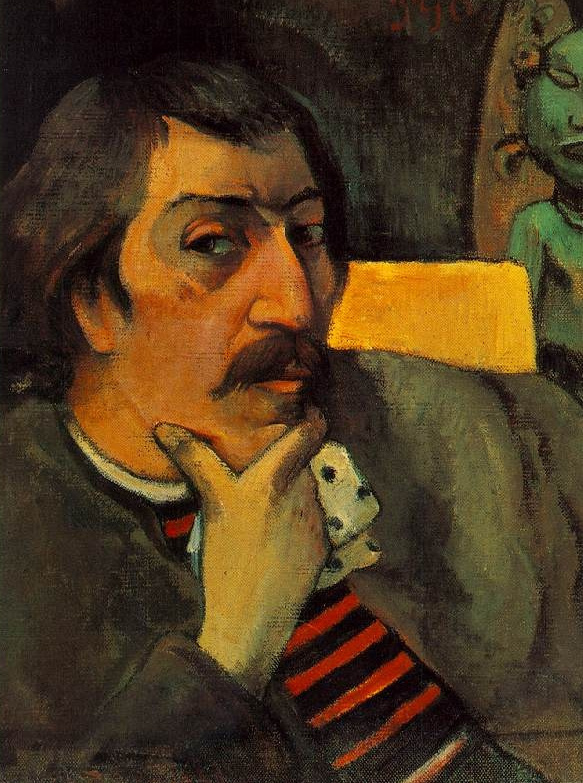Paul Gauguin always easily indulged in affairs and parted without regret. The two main women of his life were completely opposite. The Dane was plump and a little rude, while the Tahitian was swarthy and inoffensive. The first woman spent 12 years with Gauguin and bore him five children, while the second woman was a passionate, but short "tourist" marriage. However, in spite of everything, both these women have left the most notable mark in the artist’s soul and work.
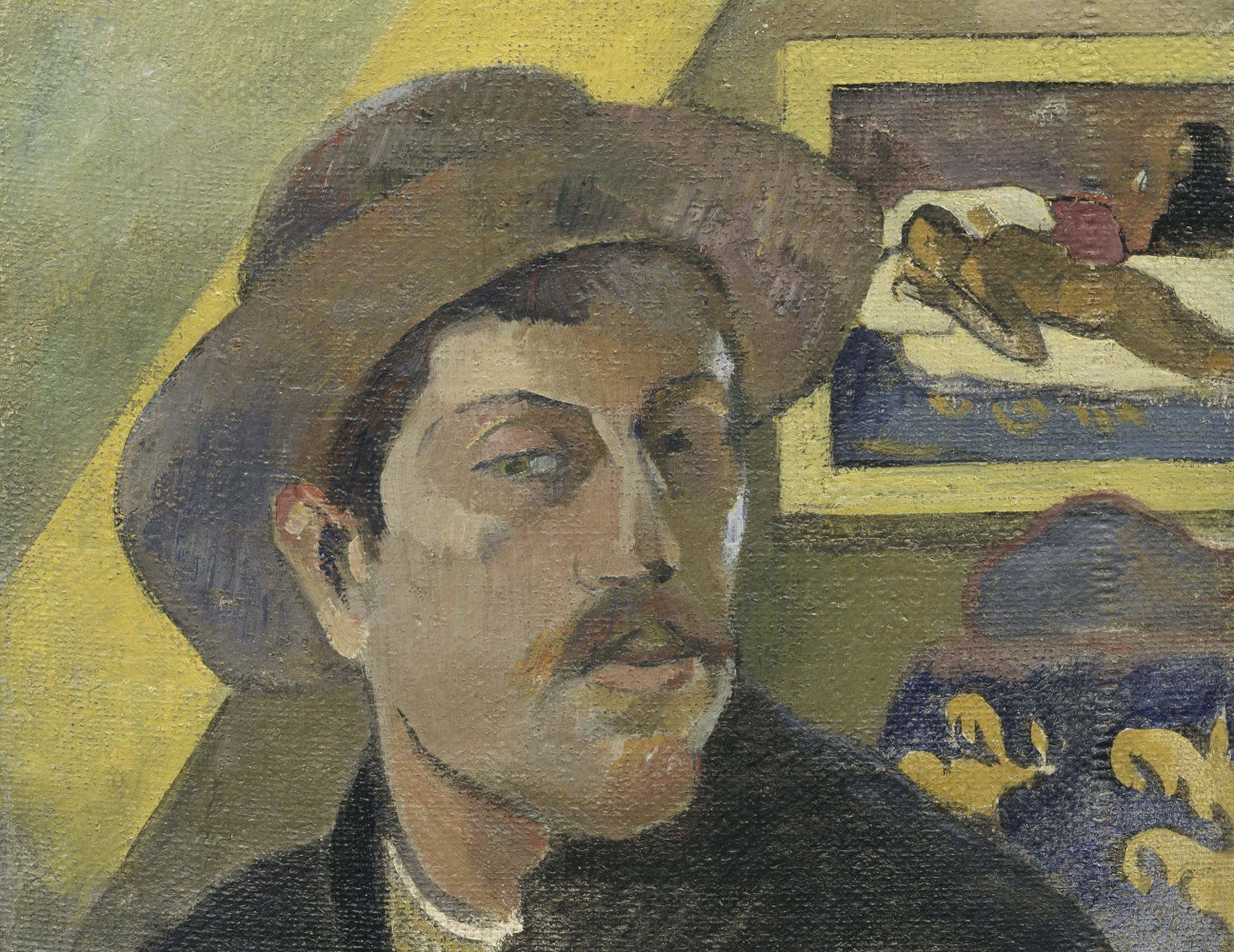
The painted hearth
Paul Gauguin met the young Danish woman Mette-Sophie Gad in Paris in 1872. The future artist recently has started to work at the office of a stockbroker, and the girl was a governess of the children of the Prime Minister of Denmark. In January of the next year, they got engaged, and they married in November. Soon the first child was born to the couple, and things started looking up. Gauguin obtained a highly paid job in a bank, the money was more than enough for the decent life of the family and for painting, which was Paul`s main hobby. For a long time, Gauguin only remained a connoisseur and collector of other people’s works, but eventually he began to paint.Above: the earliest works by Gauguin.
The first years of Paul and Mette’s relationship were completely happy and carefree at first glance. They gave birth to five wonderful children, had no financial problems and led fairly active social life. However, Gauguin did not like the role of the "on-and-off artist", he wanted to paint more, exhibit and sell his paintings. Therefore, when France sank into the economic crisis, Gauguin considered it a sign to quit the job and devote himself entirely to art. The artist and his family were on the poverty line. They moved to Rouen to reduce spending. Gauguin had to sell his collection of paintings, since his own works found no demand.
Mette Gauguin asleep on a sofa
1875, 24.5×32.5 cm
Mette was naturally unhappy with such drastic changes. Besides that she and her children had to live in the wilderness, suffering from lack of money, her husband refused to seek a new gainful work, following his stupid dream. Gauguins stroke up quarrels more and more often. In the end, Mette could not stand it anymore. She took the children and went away to her family in Copenhagen.
In Denmark, Mette had to find some job: she began to teach French to local children. Soon she persuaded her husband to reunite with his family in Copenhagen. Here the artist felt even worse than in Rouen. He did not know the language, he had to work as a tarpaulin salesman, and his wife’s family treated him with contempt. In 1885, the couple finally parted, and Gauguin returned to Paris.
Above: portraits of the children of Paul Gauguin.
Indissoluble bonds
Paul and Mette would not live together for a single day. However, over the next few years, the artist would regularly send letters to his ex-wife: he would complain about his life, boast of his success, talk about his travels and share his thoughts. Sometimes Gauguin strikes at criticism and accusations. In one of the most difficult periods of his life, in the spring of 1886, he reproached Mette for being more of a mother than a wife. The artist wrote, "One day my situation will improve, and I will find a woman who will not be a mother in our relationship."In the photo: Gauguin with his wife, Mette with children, Paul Gauguin in 1889.
In February 1891, Gauguin’s friends arranged an exhibition to sell his paintings, which finally brought him enough money to travel to Tahiti. By that time, the artist was already obsessed with this tropical island, which he regarded as a salvation from all problems. Gauguin managed to raise almost 10 thousand francs. Needless to say, that Mette and her children did not get a single sous of this money, but the artist arranged a grand farewell banquet. The more surprising is the letter Paul sent to his wife shortly before his departure, "My dear Mette, I know how difficult these days are for you, but the future is secured; I would be happy, very much happier if you could share it with me. And when we both turn gray, and passion will be no longer for us, we will enter a period of rest and spiritual happiness, surrounded by our children, the flesh of our flesh. I assure you, in three years, I will win the battle, and this will allow two of us to live a sheltered life. You will rest and I will work. And, perhaps, someday you will understand what kind of man has become the father of your children. Good-bye, dear Mette, good-bye, dear children, think kindly of me. When I return, we will get married again. In the meantime, take my wedding kiss."
We cannot know whether Gauguin really intended to reunite with his family, or he just was a word-monger. Moreover, Mette’s letters to him have not survived, so we can hardly judge how she treated such outpourings. Nevertheless, the former spouses have never seen each other since 1891.
Barbarian music
1893
The triumph of half-truth
In his youth, Gauguin traveled by merchant ships a lot, which caused his craving for exotic countries. In 1887, shortly before his arrival to Arles to Van Gogh, he spent several months in Martinique and made his first bright paintings, praising the life of the natives against the picturesque landscapes. He planned to come again to Martinique, but eventually he chose Tahiti. This decision was significantly influenced by the "The Marriage of Loti" of the French writer Pierre Loti (real name — Julien Vio). An autobiographical novel, in which the truth was skillfully intertwined with fiction, convinced Gauguin that Tahiti is an earthly paradise. In fact, Loti only lived on the island for two months, and the impressive part of the book was just his fantasies or exaggeration. Even his native beloved, as the writer himself admitted, was a collective image of women with whom he had short-term affairs on the island.
By the sea (Fatata te Miti)
1892, 67.9×91.5 cm
Meeting of the two worlds
In April 1891, Paul Gauguin departs from Marseilles to Papeete. He had enough money and hope, as he was going to find himself in the Garden of Eden soon, all problems would recede, and he would easily paint beautiful native women in heavenly tabernacles. In Paris, the artist left his former model and mistress Juliette Huais without regret, who was expecting his child at that time.
The loss of virginity (Awakening of spring)
1891, 90×130 cm
Juliette Huais was the model for the picture "Loss of virginity".
Two months later, Gauguin stepped on the Tahitian shore and was terrified to see almost European city. The French colonists upgraded Papeete to their taste and turned the Tahitian capital into an "island of civilization". Gauguin found himself a local escort, who spoke French well, and went to the wilder part of the island. There, the artist finally found the life that he drew in his fantasies. He rented a hut at the ocean shore and began to paint portraits of swarthy women in exotic clothes and even without them, and idyllic landscapes dazzling with unnaturally bright colors. Soon Gauguin met Teha’amana.
She was only 13 years old, and she was innocent in every sense, but the most important was that the girl was not "spoiled" by civilization. In his letters and in his famous book Noa Noa, which he wrote in Tahiti, Gauguin calls her Tehura. The girl became his new muse; you can see her features in many canvases of the first Tahitian period. However, it was the childlike submission of Teha’amana that attracted the artist, rather than her willingness to pose. She endured his uneasy character and rampages with placability, and satisfied his exorbitant (according to his friends) sexual appetites. However, Tehura had another feature that fascinated Gauguin — her infinite otherness. She was a woman from a completely different culture, she lived among legends and myths, spirits and ghosts, her thoughts and emotions were a complete mystery to a civilized foreigner. In the paintings by Gauguin, Teha’amana became the personification of these insurmountable differences between the two worlds, people of which can peacefully coexist in one territory, but are not able to understand each other to the full extent.
Merahi metua no Tehamana (Tehamana Has Many Parents)
1893, 76.3×54.3 cm
Mating game
Teha’amana was born on one of the Society Islands, which are part of French Polynesia. Her parents moved to Tahiti soon and settled near Mataiea, the place where Paul Gauguin would live a few years later. The artist got acquainted with the girl during an excursion around the neighborhood and married her the same day. Interestingly, according to local traditions, Teha’amana had two pairs of parents (biological and adoptive), and Gauguin had to negotiate a marriage with them all. These family circumstances are referred in the title of the portrait "Ancestors of Teha’amana (Teha'amana has many parents)" (1893).
Supposedly, a photo of Teha’amana.
A marriage with a native woman (such women were called waine) was a common practice for French entrants. It attracted Gauguin, as well as many other men, because it had no actual legal force and imposed no obligations. It could always be terminated unilaterally, both at husband’s and wife’s request. The native women often regarded it as a temporary relationship as well, so they could return to their parents' house at any time, and then find a new patron among the newcomers or marry a local man.
When are you getting married?
1892, 105×75.5 cm
This affair was of practical interest to Gauguin as well. The natives were quite self-sufficient in matters of providing themselves with food: they picked fruit in the mountains, went fishing and hunted wild pigs, while the artist had neither time nor skills to secure his living, and therefore had to buy the fabulously expensive canned food at a local store. Waine and her relatives could provide him with fresh fruit, meat and seafood at zero cost.
However, it would be incorrect to say that Gauguin married Teha’amana solely for mercantile reasons. He had a soft spot for her (as far as it was possible in his case), he even loved the girl in his own way. She was his inspiration, his exotic dark-skinned nymph, the embodiment of ancient legends of beautiful goddesses.
However, it would be incorrect to say that Gauguin married Teha’amana solely for mercantile reasons. He had a soft spot for her (as far as it was possible in his case), he even loved the girl in his own way. She was his inspiration, his exotic dark-skinned nymph, the embodiment of ancient legends of beautiful goddesses.
Was there the ghost?
In Tahiti, Gauguin began to write the book Noa Noa, much of which was an idealistic fiction, just like the subjects of his paintings. He also did not forget about letters to Mette. In December 1892, the artist wrote to her, "I have painted a naked young girl. Her posture is almost obscene. But I wanted to portray her that way, I was excited about her lines and movements. So I decided to give her face a frightened expression." Certainly, Gauguin does not mention a word that the girl in the picture is his "wife".
Spirit of the Dead Watching
1892, 73×92 cm
In his letters, the artist tells rather romantic story about Tehura who was paralyzed with fear, when he came home late in the evening. According to his words, the superstitious girl was afraid of the darkness, which could conceal spirits and ghosts. However, in his book Noa Noa, he writes of another fear of Teha’amana, "Motionless, naked, lying on the bed with her face down, she looked at me with eyes wide with fear … Perhaps she took me with my suffering face for one of those daemons or the ghosts that inhabit the sleepless nights of her people." Some researchers believe that Gauguin had a reason to imagine himself as the cause of the girl’s horror. Many people marked his aggressive behavior, which could extent to everyone without exception. In their opinion, the fear of Tehura could only spur on his sexual desire.
The spirit of the dead does not sleep
1894, 18×27 cm
When describing his life with Teha’amana to his friends, the artist spoke of her telling him stories of local legends and religious rituals night after night. However, later the Swedish anthropologist Bengt Danielsson strongly refuted all the stories told by Gauguin, allegedly as his waine told them. According to the scientist, by the end of XIX century, Tahitians had forgotten most of the myths (mainly as a result of colonization); moreover, they were kept secret from women. Therefore, the legends described by the artist in Noa Noa were the fruit of the imagination of either Tehura or himself.
Tahitian Eve
1892
P.S.
Gauguin did not live long in Tahiti for the first time. Having spent all his money he painted several good paintings and decided to return to Paris in order to sell them and settle on the island for good. He left Teha’amana and their common child as usual, without any remorse. During his next visit to Tahiti in 1895, Gauguin tried to return her by means of generous gifts and jewelry, but the girl refused to resume their relationship. In particular, because the entire body of the artist was covered with hard chancres. However, this fact did not prevent Gauguin from seducing three new waines.
Self portrait with the idol
1893, 43.8×32.7 cm
Soon Teha’amana married a local young man and gave birth to two children. She died in 1918 during the epidemic of the Spanish flu, which swept away a quarter of the Tahitian population. Mette Sophie Gad died in 1920 at the age of 70, having survived her two children and her ex-husband.
Photo sources: paulgauguin.org, wikipedia.org.
Cover illustration: a fragment of the painting by Paul Gauguin "Self Portrait in a Hat".
Cover illustration: a fragment of the painting by Paul Gauguin "Self Portrait in a Hat".










